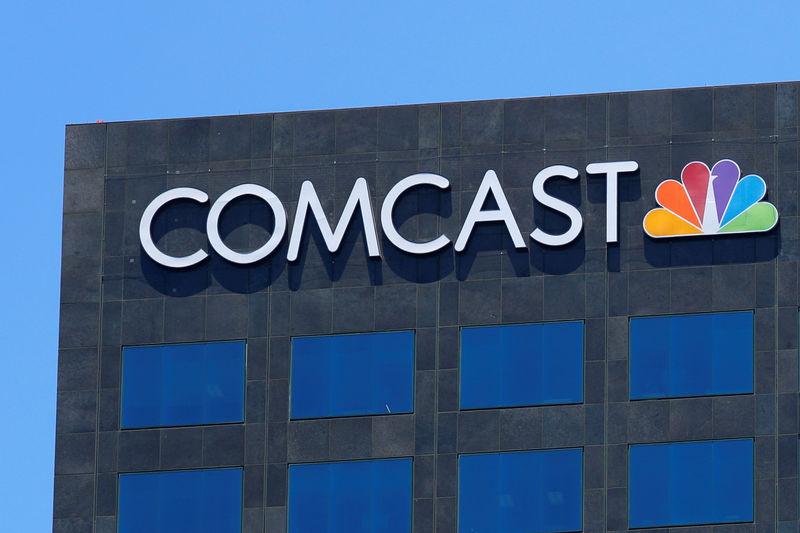Benzinga - by Benzinga Insights, Benzinga Staff Writer.
Amidst the fast-paced and highly competitive business environment of today, conducting comprehensive company analysis is essential for investors and industry enthusiasts. In this article, we will delve into an extensive industry comparison, evaluating Comcast (NASDAQ:CMCSA) in comparison to its major competitors within the Media industry. By analyzing critical financial metrics, market position, and growth potential, our objective is to provide valuable insights for investors and offer a deeper understanding of company's performance in the industry.
Comcast Background Comcast is made up of three parts. The core cable business owns networks capable of providing television, internet access, and phone services to 62 million U.S. homes and businesses, or nearly half of the country. About 55% of the homes in this territory subscribe to at least one Comcast service. Comcast acquired NBCUniversal from General Electric in 2011. NBCU owns several cable networks, including CNBC, MSNBC, and USA, the NBC broadcast network, the Peacock streaming platform, several local NBC affiliates, Universal Studios, and several theme parks. Sky, acquired in 2018, is the dominant television provider in the U.K. and has invested heavily in proprietary content to build this position. Sky is also the largest pay-television provider in Italy and has a presence in Germany and Austria.
| Comcast Corp | 11.87 | 2.08 | 1.48 | 4.85% | $10.02 | $21.46 | 0.89% |
| Charter Communications Inc | 12.28 | 5.01 | 1.06 | 11.64% | $5.24 | $5.29 | 0.25% |
| Cable One Inc | 37.63 | 1.66 | 1.92 | 2.21% | $0.19 | $0.31 | -1.03% |
| Average | 24.96 | 3.33 | 1.49 | 6.93% | $2.72 | $2.8 | -0.39% |
th, td { padding: 8px; text-align: left; }
th { background-color: #293a5a; color: #fff; text-align: left; }
tr:nth-child(even) { background-color: #f2f4f8; }
tr:hover { background-color: #e1e4ea; }
td:nth-child(3), td:nth-child(5) { text-align: left; }
.dividend-amount { font-weight: bold; color: #0d6efd; }
.dividend-frequency { font-size: 12px; color: #6c757d; } Through a detailed examination of Comcast, we can deduce the following trends:
- The Price to Earnings ratio of 11.87 is 0.48x lower than the industry average, indicating potential undervaluation for the stock.
- The current Price to Book ratio of 2.08, which is 0.62x the industry average, is substantially lower than the industry average, indicating potential undervaluation.
- With a relatively low Price to Sales ratio of 1.48, which is 0.99x the industry average, the stock might be considered undervalued based on sales performance.
- The company has a lower Return on Equity (ROE) of 4.85%, which is 2.08% below the industry average. This indicates potential inefficiency in utilizing equity to generate profits, which could be attributed to various factors.
- With higher Earnings Before Interest, Taxes, Depreciation, and Amortization (EBITDA) of $10.02 Billion, which is 3.68x above the industry average, the company demonstrates stronger profitability and robust cash flow generation.
- With higher gross profit of $21.46 Billion, which indicates 7.66x above the industry average, the company demonstrates stronger profitability and higher earnings from its core operations.
-
With a revenue growth of 0.89%, which surpasses the industry average of -0.39%, the company is demonstrating robust sales expansion and gaining market share.
The debt-to-equity (D/E) ratio helps evaluate the capital structure and financial leverage of a company.
Considering the debt-to-equity ratio in industry comparisons allows for a concise evaluation of a company's financial health and risk profile, aiding in informed decision-making.
When assessing Comcast against its top 4 peers using the Debt-to-Equity ratio, the following comparisons can be made:
- In the context of the debt-to-equity ratio, Comcast holds a middle position among its top 4 peers.
- This indicates a moderate level of debt relative to its equity with a debt-to-equity ratio of 1.24, which implies a relatively balanced financial structure with a reasonable debt-equity mix.
This article was generated by Benzinga's automated content engine and reviewed by an editor.
© 2024 Benzinga.com. Benzinga does not provide investment advice. All rights reserved.
